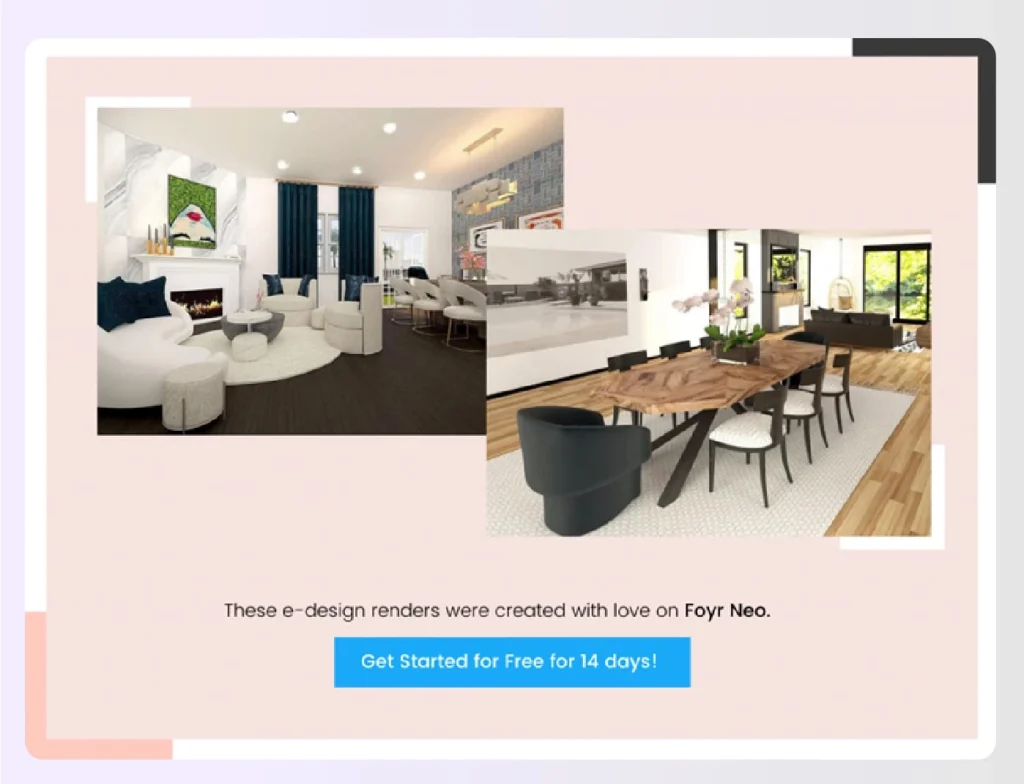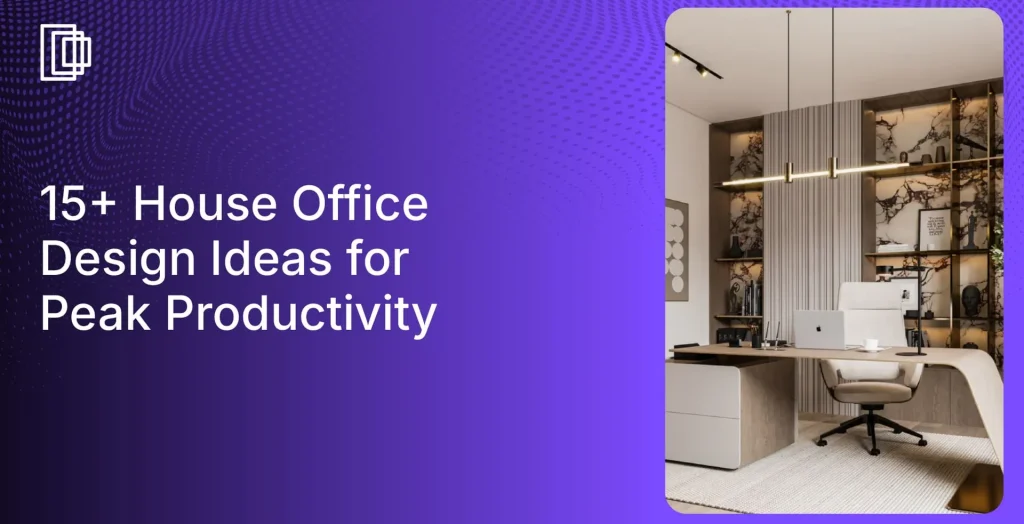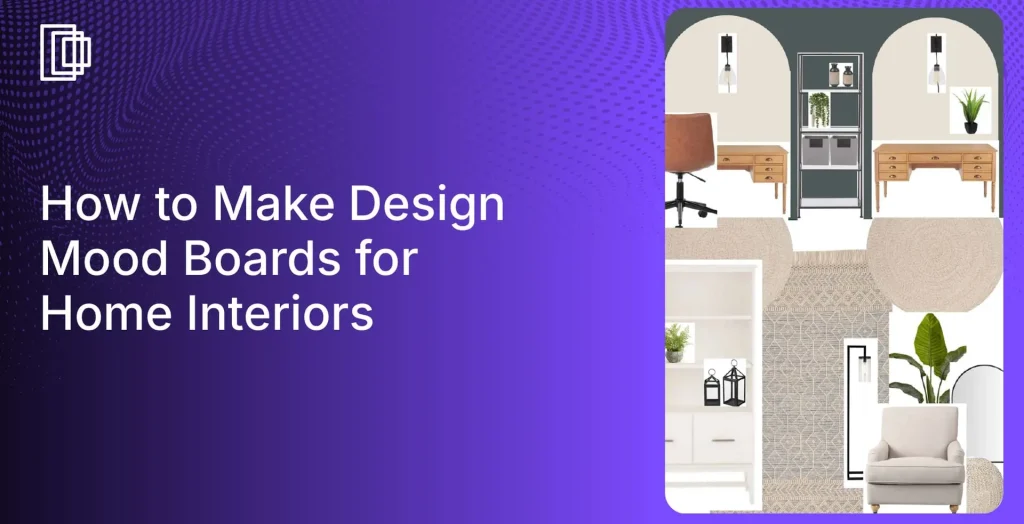Flooring of a house is a big commitment. In terms of time, money, and effort, it takes a lot of resources to install for a new homeowner, modify, or remodel from scratch. If your client wants a fresh look to the house, it’s easier to remove furniture and fixtures around the house, but flooring is the most difficult thing to change in the future.
There are a ton of things to consider before determining the best flooring materials, and we’re here to ensure you make a great choice. Walk with us, and let’s find out.
8 things to look for when assessing flooring for interior design
When you pay a visit to your client’s space, take a look, take them through different areas, and assess the following:
- What’s the budget, and what materials are preferred?
- What’s the overall ambiance of the house?
- Which areas get high traffic in the house?
- Do they have children or pets moving about?
- What happens in the room?
- Will they have a lot of noise coming out of the room?
- Look at the landscape, and determine if it’s likely to flood.
- How often can your client clean their floors?
You also need to look at highly durable flooring for frequently used spaces like kitchens, bedrooms, stairs, etc, and can go in for luxurious materials for the living room, powder room, etc.
Another major point to consider before planning flooring for interior design is the seasons of the region, and how hot and cold the place will turn when the seasons change. Flooring in general tends to expand with heat and contract with cold temperatures, and you need to factor in this variable when presenting flooring samples to your clients.
Read also – how to choose materials for interior design
11 major types of flooring materials you can consider for seamless interior flooring
Explore, and compare different types of flooring materials together and find out what works best for your clients.
Hardwood
Almost all wall colors and patterns go well with hardwood, and they exude a palatial look when used in kitchens and living rooms. Solid hardwood flooring adds an iconic piece of character to your client’s home, making it memorable. The problem is, that constant exposure to spills and stains can taint the wooden floor permanently and make it incredibly hard to clean. Contrary to popular belief, wooden floors can be used in bathroom floors, provided you interact with your client’s builder and lay down waterproof membranes under the bathtub, and water-prone areas to drain out water quickly so that they don’t stay on the surface and cause damage.
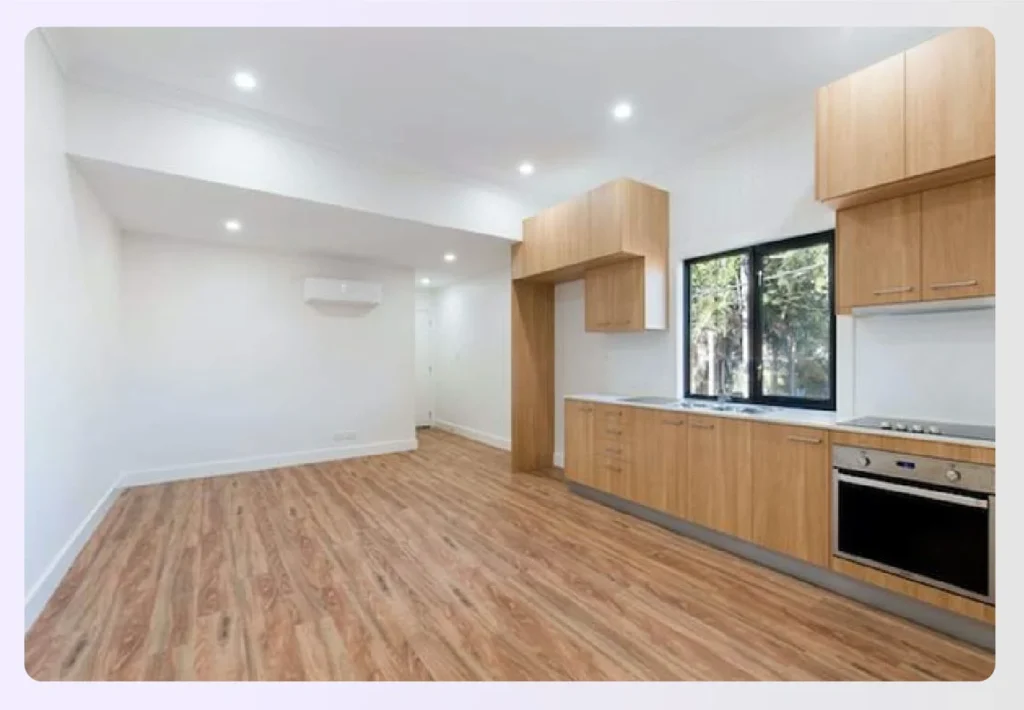
Image source – Unsplash
For the most used room of any house, the kitchen, wood is recommended only if it is sealed, and cleanable. Hard surfaces like hardwood floors can be difficult for homes with the elderly, as their joints and feet may hurt when they walk on a hard surface for a long time. Another issue with hardwood floors is the noise absorption problem. If not fixed with the right spacing and distance from the wall in mind, squeaking noises can arise every time your client’s family walks.
If your client wants an all-wood floor but loves some visual differentiation in the flooring, you can use stained or painted wood in different areas of the house. The advantage of using stained wood is that any scratches or damages won’t be clearly visible upon the first look.
Reclaimed wood
If you ever lay your hands on reclaimed wood, don’t let it go, and use it wisely for your flooring. It adds an element of age, direction, beauty, texture, and character to the overall design that makes it truly gorgeous. It can be used anywhere in the house – be it hallways, living rooms, or office spaces. We recommend having rugs atop them.

Image source – tnwoodflooring
However, the flip side to this material is that it entails high maintenance, and you need to put in a lot of hours, along with the builder to prep the material and custom-make it to the space. Laying down the flooring is going to take time, so if your client is in a hurry to wrap up the design or flooring, it’s going to be difficult.
Carpets
Don’t use different color carpets in every room, they are hard on the eyes, and the finishes may increase difficulty to walk on. Keep the foundation strong when you’re carpeting. Use the same carpets as every other room, so you get a uniform look.
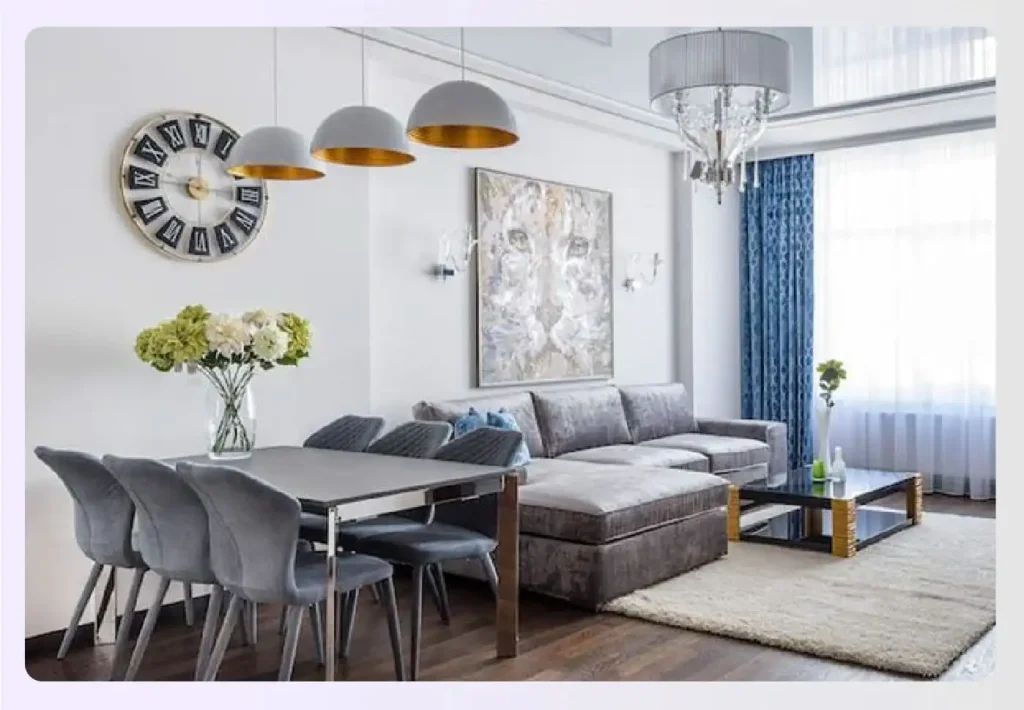
Image source – Pexels
When it comes to placing rugs on the carpet, you can go for any type of colored, patterned rug in the same room. In rooms where you have a broad space used for a singular purpose, say the bedroom, a carpet looks great in terms of aesthetics and also feels soft to place the feet when your client wakes up in the morning.
If your client wants to carpet their entire floor, you can try using carpet runners to deftly navigate the spaces between stairs, and curbs.
The major problems with carpet flooring and the reasons why a lot of people rethinking their choice of carpeting are:
- They trap dust, and allergens and can be troubling to those with allergies.
- They are incredibly hard to clean even if your client regularly vacuums it.
- Wear out pretty badly.
- Difficult to move around.
Wool
This natural fiber is at the heart of luxurious living, and it lives up to its name. Wool looks brand-new despite years of usage, it wears slowly and has a warm tone to it. Being a natural fiber, it radiates energy back to your feet and is ideal for all seasons. Although it is on the far end of the price range, the investment is only one time. You get to enjoy the benefits for decades to come.

Image source – Unsplash
It’s truly a timeless piece of flooring you can get. A major perk of woolen carpets is that it’s not easy to tell if the carpet hasn’t been vacuumed, So, if you’re used to having people over and want a low-maintenance flooring option, having a woolen carpet boosts the impression of your home and makes it look polished.
Seagrass
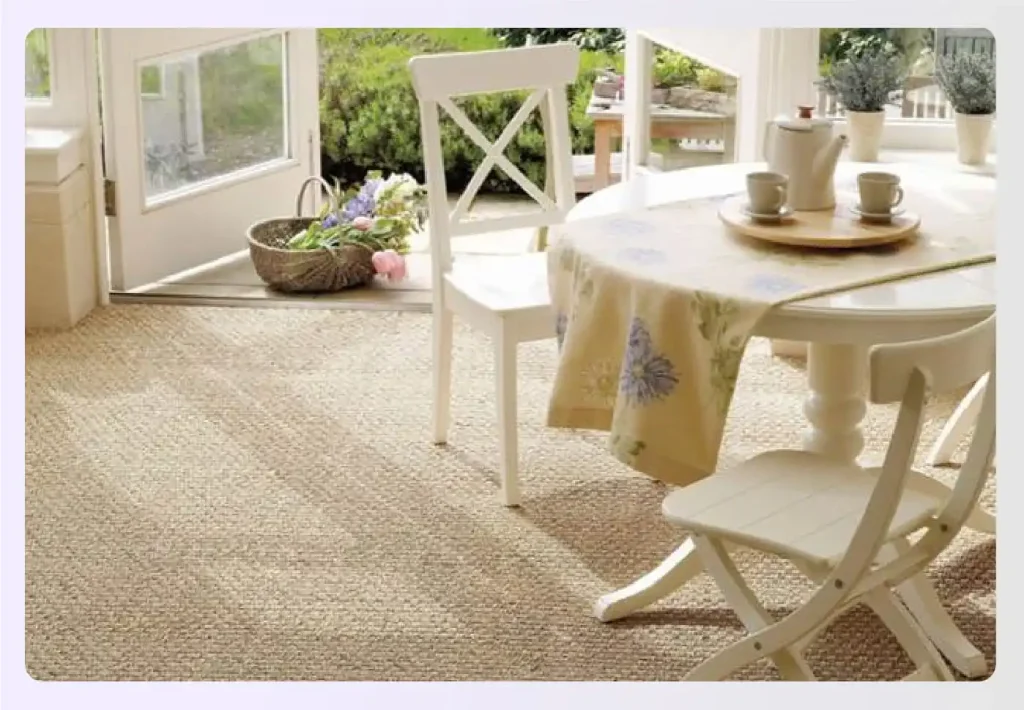
Image source – Pinterest
Looks lovely and is a nice alternative to the woolen carpet. It feels like natural linen and creates a visual difference of light and shadow effects when the place is illuminated.
Cork carpets
One of the most versatile and eco-friendly carpet choices ever, cork carpets are cost-efficient and great for kids and pets to play around without tripping over. They are anti-microbial, made from natural materials, and don’t trap allergens. They have high moisture resistance and can be easily replaced if your client wants a different look on the floor.
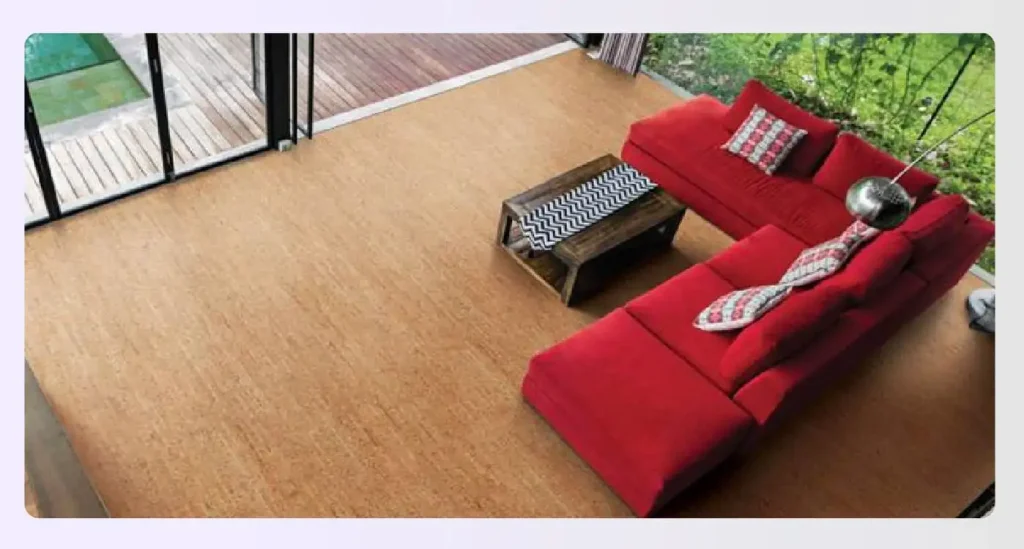
Image source – v4woodflooring
They come in cool and warm colors and can be matched with any color palette. Bamboo flooring is another truly sustainable flooring option.
Tile
There’s a rule of thumb when it comes to tile selection, and that is, the more porous the tile is, the more hassles you will face when cleaning it. One way to make tiles stain-resistant is to fill the tile with stainback so it doesn’t absorb oil, wine, or any other liquid that percolates down.
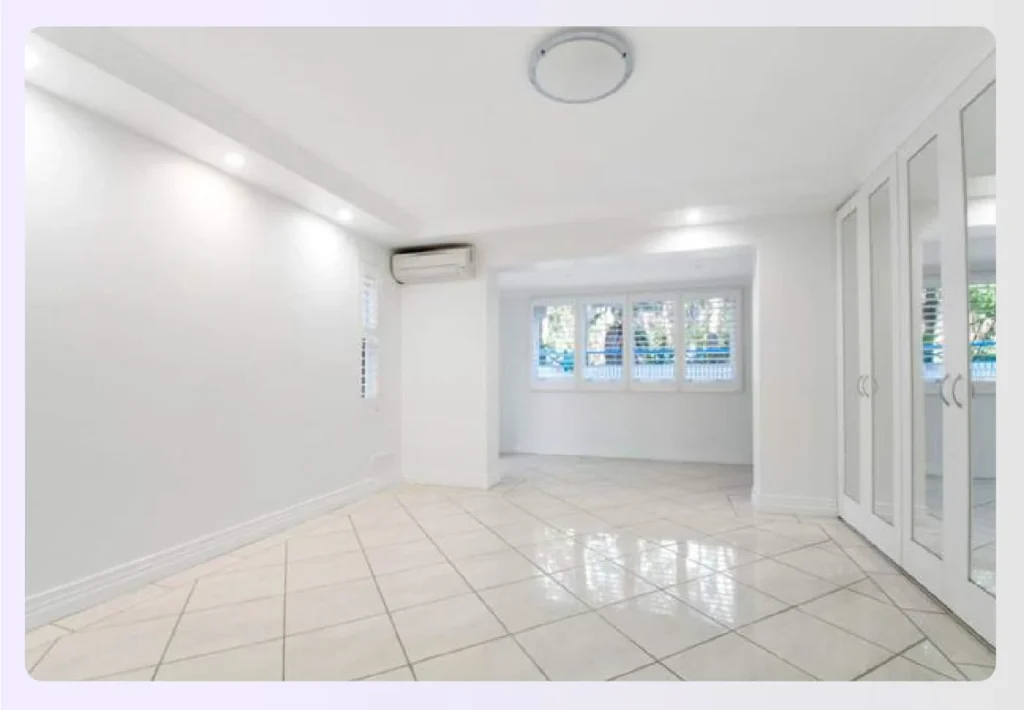
Image source – Unsplash
If you have a small hallway leading to your living room, and you want to set a formal, or funky tone before your client’s guests enter their home, you can choose tile flooring. The best bet is to use tiling in the hallway when there’s a door or a partition between the hallway and the immediate next room.
Generally, the con of using tiles is the constant need to maintain the grouts to keep the tiles looking as ravishing as ever.
Marble
The queen of materials, and one of the most expensive materials ever, marble gives a royal look to the home like no other. The smooth texture, nature-inspired patterns, and the age of the natural stone add a unique charm to it.

Image source – Unsplash
With a stunning matte finish, beautiful marble flooring is simply irresistible and boosts the value of your client’s home to onlookers. If your client has the budget for their dream home building or remodel, and wants the home to look and feel truly luxurious, marble is the way to go. It’s best used in kitchens, bathrooms, and hallways.
But, a word of caution here is that it’s very high maintenance, and your client needs special solutions, liquids, and tools to get dirt and spills off the surface without accidentally scratching the marble surface.
Concrete flooring
It almost looks like marble, you can color it, stain it and it’ll look as good as new. You don’t have to worry about levying heavyweight for a prolonged period and cracking it. It’s absolutely safe for the kids in the house. Works well for heavy use areas like kitchens, and is highlight durable. Concrete flooring is relatively easy to maintain.
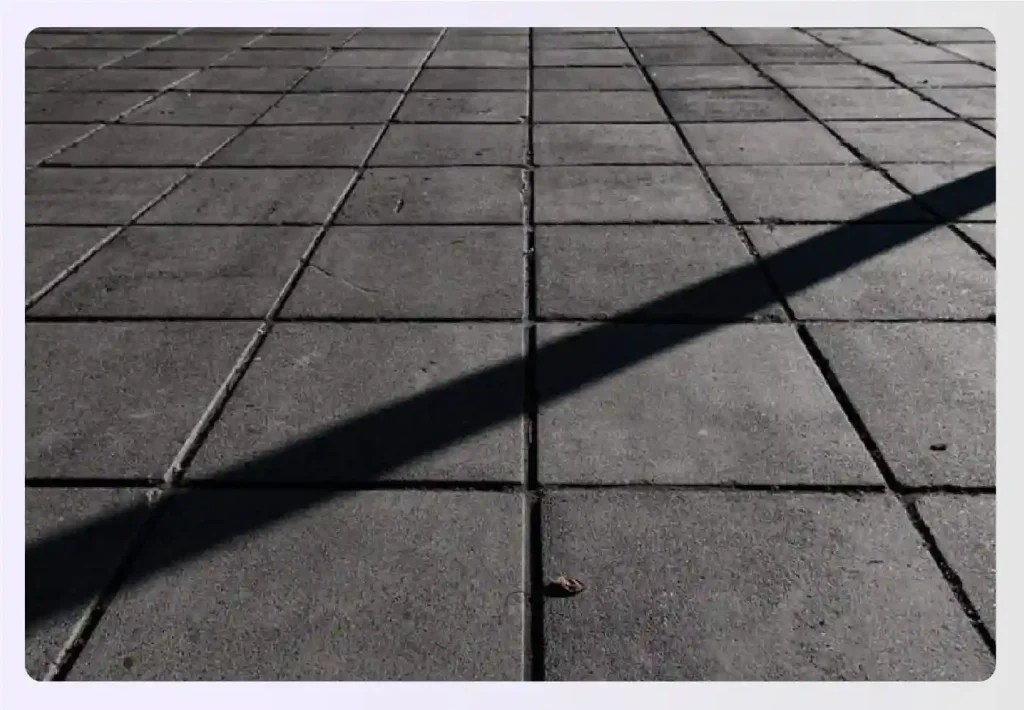
Image source – Unsplash
If you want to spruce up the design, decor, or color after a few years, you can regrind it back and install new flooring, repaint, or decorate it. With a sturdy, insulated underlay and a wide rug on the top, concrete flooring looks dreamy.
When a client shuns away from concrete flooring because it looks cold and uninviting, suggest the following to them:
- Upholstered chairs with bright colors in your spaces cancel noise and add vibrancy.
- Use rugs extensively, near the armchair, or sofa, to delineate dedicated areas, reduce echoes, and create sub-zones in a singular space.
- Don’t rely too much on lighting to make the place livelier, as too much overhead lighting can bounce off the polished concrete surface and be hard on the eyes.
Laminate flooring
Great looking, tough, cost-efficient, high-performing, water-absorbent, and long-lasting flooring material that has the best of all worlds and still doesn’t burn a hole in your pocket. Also known as luxury vinyl tile, laminate mimics wood in its appearance, but is more water-resistant than real wood.
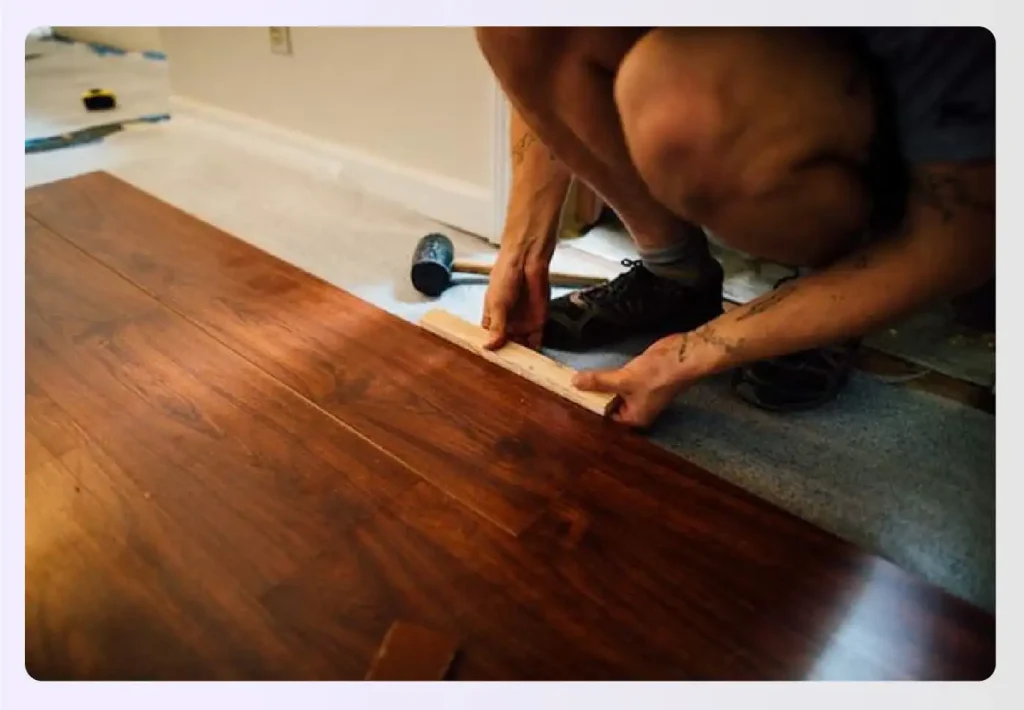
Laminate is sturdy, resembles engineered wood in strength, and comes in rich colors. It’s easy to install and clean. You can simply rip up individual planks if you want to change them and put them back in. They aren’t cushiony, so they may cause joint pain or foot pain to the residents.
Linoleum
Made from linseed oil, linoleum is a natural product that’s highly durable and doesn’t dent or chip away even with prolonged use. It comes in great colors and textures for you to experiment with. The slate grey version of linoleum looks like concrete itself. You don’t have a problem with grouts or regrouting, so there’s no discoloring in the middle of the floor.
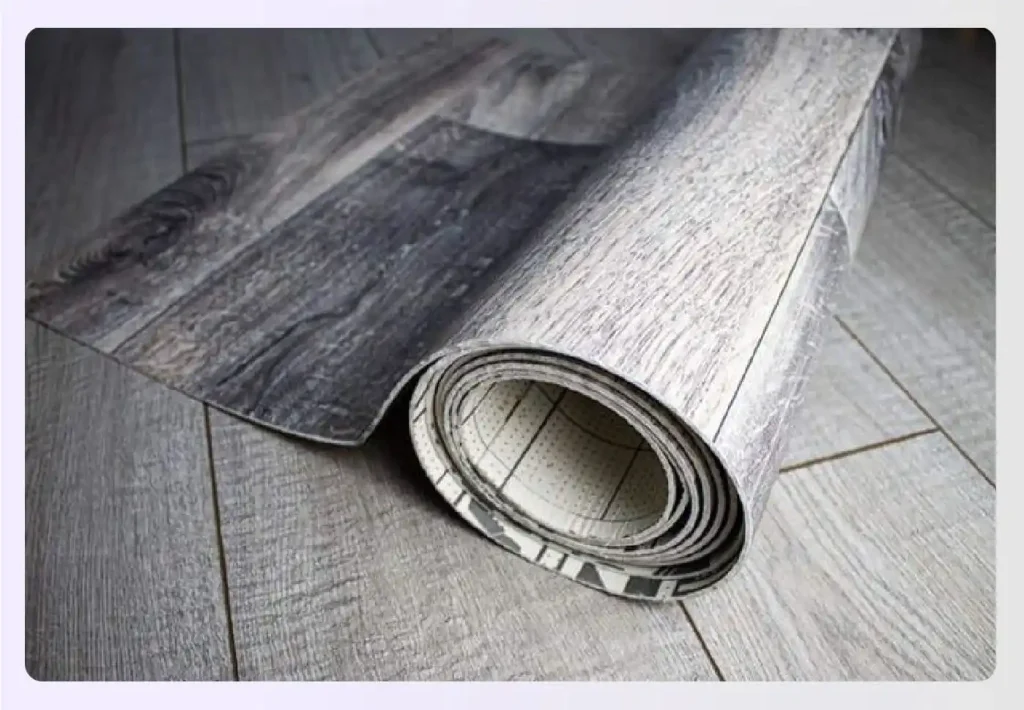
Image source – Pinterest
You can get a flowy, seamless flooring, that’s softer on the foot than tile and works well in the long run, all the while being budget-friendly.
Special considerations for the aging population
When designing the right flooring for elders, it’s important to have the following considerations in mind:
- Install non-slip flooring (non-glare, matte finish), as polished flooring may create an illusion of water on the floor, and mess with the troubled visual depth elders face.
- No complicated patterns resembling checkerboards, as it can give an illusion of floating.
- Create contrast in color between the walls, furniture, and floor.
- Bring in variety, in terms of texture in the fabrics used. Add heavy rugs if you want to evoke an aura of coziness.
- Steer clear of carpets altogether, as it creates friction and makes it hard for the elderly to move around in wheelchairs or walkers.
- Add a splash of color wherever possible, so the piece of furniture, flooring, or decor stands out from the rest and is visually appealing.
Common flooring issues and how to mitigate them during the design phase
- Don’t go for cheap, thin, and delicate materials for high-traffic areas. You may have to refloor them again in a few years.
- A general rule in flooring is the rule of the triangle. Three core elements need to be kept in mind – quality, speed, and time.
- If you want high-quality flooring, it’s going to take time and cost more. If you want a cheaper, budget-friendly material, you get it installed fast with great functionality, but will settle for a mellowed aesthetic look. It’s wise to communicate this to a client before they set their own expectations on timelines and costs.
- Visualize the space clearly and with great attention to detail with the help of a fantastic design tool like Foyr Neo, and figure out the proportions, materials, and adjustments you need to make for the floor, dimensions to cut out for door jams, entryways, etc, so there’s minimal wastage.
- Coordinate with the builder and ensure there’s at least 3/8th of an inch’s space between the floor and wall when laying down flooring, especially wooden flooring. If the planks are fitted too tight, they might buckle up and create problems of their own.
How can Foyr Neo help you visualize flooring and choose the best material and finish?
Before you go ahead with any type of flooring, assess the main color palettes of the home, discuss materials, and finishes, and give them a real mockup of different flooring materials for them to visualize what it would be like to live with the particular materials under their feet.
The best, and most cost-efficient way to do this would be to use an intelligent flooring interior design software like Foyr Neo, and accomplish the following tasks in a jiffy:
- Draw up or create the floor plan, and dive into the nitty-gritty.
- Based on your client’s inputs and your own observations, determine which areas will be high-traffic and which spaces will be low-traffic, carve out dimensions, the position of the door, the extent of materials used, finishes preferred, etc, in graphic detail. Neo’s photorealistic floor plans make it so clear that your client needn’t have to visualize, but view their possible living space right in front of their eyes.
- Add 3D flooring elements, and populate the design with other day-to-day elements like pieces of furniture, fixtures, etc, and look at how different materials and finishes work with different lighting conditions.
- Adjust lighting with AI, spot errors, and fix them right away.
- Visualize the flooring patterns in 3D, create multiple iterations, and show your client multiple flooring options.
So, here’s what you need to do right away.
Sign up for Foyr Neo’s 14-day free trial. Make sure your client picks the best flooring that works best for their needs, and the ambiance they’ve always wanted, without compromising on design, quality, finishes, and safety needs.
Frequently Asked Questions (FAQs)
1. What flooring options are best for hot and humid places?
Porcelain or ceramic flooring works best for hot places, given their inherent coolness.
2. Do floor carpets deteriorate when exposed to moisture?
Yes, carpets give in when exposed to water for long periods of time.
3. Which flooring is great for people with allergies?
Tiling flooring is a great option for people with allergies.
4. Is it advisable to use flooring materials closely resembling hardwood?
Engineered timber flooring closely resembles the aesthetics of hardwood flooring, and has real wood on top and plywood underneath. If your client is not too keen on only using real wood flooring and wants the best of both worlds, yes, you can choose materials resembling hardwood.
5. What type of flooring is best in the US?
The best flooring in the US varies greatly by region and lifestyle. Hardwood remains a classic and popular choice for its timeless appeal and value. In recent years, Luxury Vinyl Plank (LVP) has surged in popularity due to its durability, water resistance, and realistic wood looks, making it ideal for families with pets and kids. Carpet is still favoured in bedrooms for its warmth and comfort, especially in colder climates.
6. How many types of flooring are there?
There are numerous types of flooring, typically grouped into major categories. These include solid hardwood, engineered wood, laminate, and vinyl (sheet, plank, and tile). Other major types are ceramic and porcelain tile, natural stone, carpet, and sustainable options like cork and bamboo. Each of these categories offers a vast range of styles, colors, and finishes, providing endless options for any interior design project.
7. What is the rule of 3 flooring?
The “rule of 3” is a design guideline suggesting that you should use no more than three different types of flooring throughout your home to maintain a cohesive look. Typically, this involves a primary flooring for the main living areas (like hardwood or LVP), a second for cozier spaces like bedrooms (often carpet), and a third durable, water-resistant option for bathrooms and laundry rooms (like tile).
8. What type of flooring is trending now?
Currently, flooring trends are leaning toward natural and sustainable materials. Light-toned hardwood floors, especially in wide planks, are very popular for creating a bright, airy feel. Luxury Vinyl Plank (LVP) continues to trend for its incredible durability and hyper-realistic wood and stone visuals. Additionally, eco-friendly options like cork and large-format porcelain tiles that minimize grout lines are in high demand for modern homes.
9. What is the longest-lasting type of flooring?
Natural stone flooring like slate, marble, and travertine, along with high-quality porcelain tile, are among the longest-lasting options available. With proper installation and maintenance, these materials can last for a lifetime—over 50 years—without needing replacement. Solid hardwood is also exceptionally durable and can last for generations, as it can be sanded down and refinished multiple times to look brand new.
10. What flooring will never go out of style?
Classic hardwood flooring, particularly in timeless species like oak, maple, or walnut, is a choice that never goes out of style. Its natural warmth and beauty adapt to virtually any design trend, from traditional to contemporary. Similarly, natural stone such as marble or slate offers a timeless elegance that remains sophisticated and desirable through the decades, making both safe, long-term investments for any home.
11. What is the most luxurious type of flooring?
The most luxurious types of flooring are typically high-end natural materials. This includes premium marble with unique veining, exotic hardwoods sourced from rare woods, and intricate custom-designed flooring like herringbone or chevron parquet. These materials are prized for their exceptional beauty, rarity, and the unmatched sense of opulence and sophistication they bring to an interior space, often becoming a home’s centrepiece.


